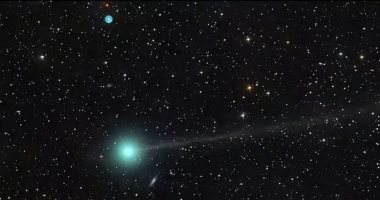Written by: Shaima Abdel Moneim Tuesday, September 12, 2023 04:34 PM
After discovery Comet Nishimura in August will be closer to Earth within a week, starting today, Tuesday, September 12. According to what was published by the Daily Mail website, Professor Brad Gibson, Director of the Milne Center for Astrophysics at the University of Hull, says that Nishimura, who is traveling through space at a speed of 240,000 miles. Per hour, it can already be seen in the hour after sunset and the hour before dawn by looking from east to northeast by looking from east to northeast towards the crescent and Venus, while it is expected to reach peak visibility next week when the space rock is on After only 78 million miles.
He added: “A comet takes 500 years to orbit around the solar system, Earth takes one year, and exoplanets can take many decades. Halley’s Comet, which aroused a lot of interest during its last close visit to Earth in 1986, takes 76 years to orbit around the system.” Al-Shamsi… So, saying that this is a once-in-a-lifetime opportunity to see Nishimura is no exaggeration.”
Professor Gibson noted: “It can already be seen, but it will be 78 million miles from Earth on September 12, and this should be the best chance to see it with the naked eye. On average, people have the opportunity to see such a comet with the naked eye once every decade. This is a rare and exciting opportunity.”
Nishimura may be visible to the naked eye, but having binoculars or a telescope will make spotting it easier, and stargazers can also use apps like SkyView, Sky Guide, and Night Sky to help find the exact location of comets like this one.
Comet C/2023 P1 (Nishimura) was discovered falling towards the heart of the solar system by amateur astrophotographer Hideo Nishimura in Japan on August 11. Professor Gibson said that Nishimura will pass close to the sun on September 17, when it will be only 27 million miles away.
Scientists are still trying to estimate Nishimura’s size, but Professor Gibson believes it could range from a few hundred meters in diameter to perhaps a mile or two. He also believes the comet could be responsible for the annual meteor shower called Sigma-Hydrids, which occur in December. each year.
The professor said that comets are “pieces of ice and rock” left over from the formation of the solar system approximately five billion years ago, and when they approach the sun, this causes the comet to heat up, releasing icy gas that gives them their distinctive tail.
